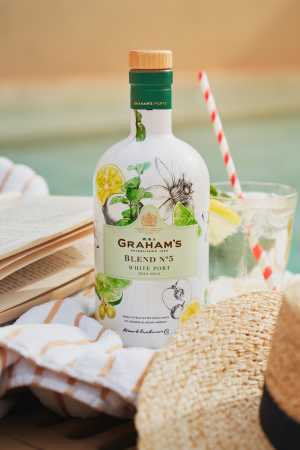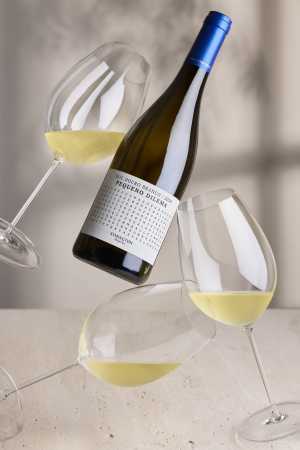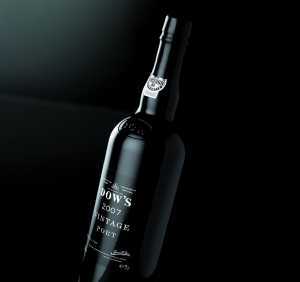IN 1882, ANDREW JAMES SYMINGTON left Scotland for Portugal. The 19-year old son of a Glasgow merchant was to work for Graham’s, a port house in Oporto, at the mouth of the Douro. He soon left their employ to ship and trade port under his own name.
Nearly a decade after first landing in Oporto, Andrew, known as AJ, married Beatrice Leitão de Carvalhosa Atkinson. Ms Atkinson herself was born into a port dynasty; her grandfather was a producer and could trace his lineage to some of the first port wine merchants of the 17th century.
For AJ, Oporto became home, and a chance to make his own name in the port trade. Partnership in Warre’s – Oporto’s first British-owned port house – was followed by that in Dow’s, another legendary name in the Douro.
In the early 1970s, his grandchildren acquired Graham’s and went on to purchase further quintas, vineyards in the Douro which supply wine for port production.
Today, Symington Family Estates is a collection of Oporto’s pre-eminent port houses and of many of the Douro’s finest vineyards. The business remains family owned, and is today managed by fourth and fifth generation Symingtons.
Victoria Symington is one of them. And, although she was born into the trade, she never expected to join it.
Time and circumstance saw her take her place in the business, which continues to release both vintage port from a stable of legendary lodges and (unfortified) wines bottled under the Douro DOC.
We met her in the 1890 Lodge – home to the Graham’s cellars on the banks of the Douro – to talk all things port.
It is fair to say that port has a reputation as a slightly stuffy drink. Is that changing?
People used to get very bogged down in tradition and rituals which, for all their charm, scare people off.
Even a decade ago, mixing port with other drinks was seen as sacrilege. Now, Graham’s hosts an annual ‘Blend Series’ cocktail competition, inviting top bartenders the world over to a three-day event in Porto and the Douro.
In the first competition last year, seven countries took part. Next year, we’ll have 17. This is only going one way and we’d be nuts to drag our feet and be left behind.
Port is all but defined by heritage and tradition. Does that leave any scope for experimental winemaking?
Absolutely. Graham’s Blend Nº5 itself was the first ever white port blended for mixing when we launched it in 2019. The port is cold-fermented to maximise its fruity and floral characteristics and has a slightly lower ABV (19%), making it an ideal alternative to spirits.
When it comes to vintage ports, we’ve begun blending in new grape varieties, namely Sousão and Alicante Bouschet.
These are often co-fermented to enhance complexity, producing vintage ports with extraordinary balance, but which are more approachable when young than those vintages released by previous generations of our family.

Your family also produces a number of unfortified wines. Presumably, there’s a lot more to Douro wines than Port?
The Douro has the world’s largest area of mountain vineyard with great variations in soil, altitude, and aspect. The indigenous Douro grape varieties deliver different expressions depending on where they are planted, affording us the change to produce world-class still wines.
We started crafting still wines from scratch in 1999, and now sell nearly 300,000 cases of Douro DOC each year.
We’ve also built a new low-impact winery at our Vilariça Valley estate, Quinta do Ataíde.
Designed to be highly efficient in energy and water use, the building is integrated into the surrounding landscape and organically farmed vineyards. It is the new home for all our premium Douro DOC red wines, which includes those from our Quinta do Ataíde and Quinta do Vesúvio estates.
Aside from this, we recently challenged our winemaking team to produce an elegant white wine from the Douro. The result is Pequeno Dilema, Portuguese for ‘small dilemma’ in reference to the challenge long posed by our family about whether this is possible in a region renowned for its ports.

Declaring vintages is presumably part art, part science. What’s your take?
To be declared a vintage, a wine must show impeccable concentration, lifted aromas, well-structured tannins, excellent balance, acidity, and fantastic ageing potential.
If we find a potential vintage, we can declare it either of two ways.
A ‘classic’, declared vintage port is seen in years when the conditions across the entire Douro are consistently favourable throughout the growing season and harvest. That means we can blend the wines from each of our port houses’ estates into ‘classic’ Vintage Port.
This is the absolute pinnacle of what we produce in the Douro and we bottle it in only the most exceptional years. Historically, this has been around two or three times a decade.
Alternatively, we could declare a ‘single quinta’ vintage port. In some years, the best wines are limited to those best parcels at our estates.
They won’t be improved by blending with parcels from other estates, so we bottle those wines as ‘single quinta’ vintages. In a trade defined by blending, these are the ultimate expression of terroir in the Douro.
And as for you personally, do any vintages stand out in particular?
The 1994 vintage from Quinta do Vesuvio [the family’s premier estate] is my first memory of tasting a vintage port and being absolutely blown away. It’s also the year my brother was born, so I’ve taken it as my vintage, as my birth year was not a great vintage!
I also couldn’t forget the Dow’s 2007, produced in a year with near perfect weather conditions. It’s a classic example of an extraordinary vintage port with concentrated black fruit flavours and an impossibly long, complex finish. Wine Spectator magazine awarded it a perfect 100-point score, which is virtually unheard of.

For more information, see symington.com
